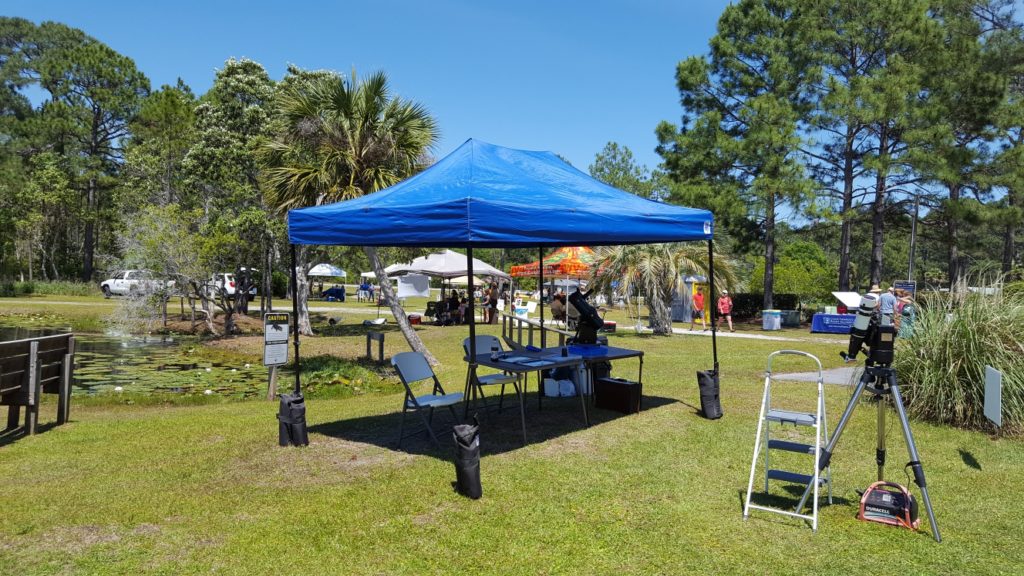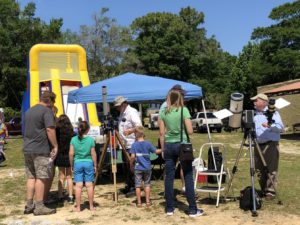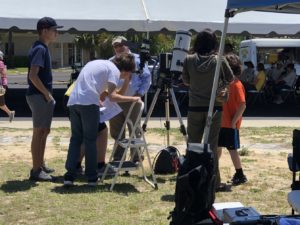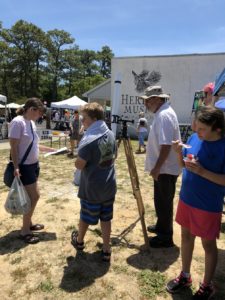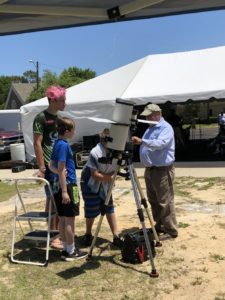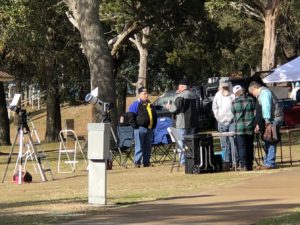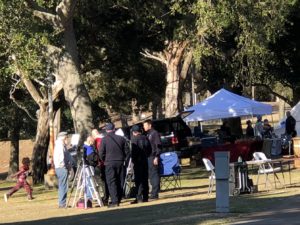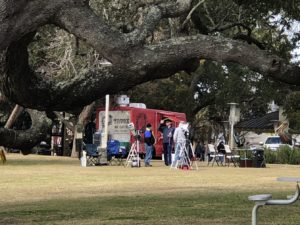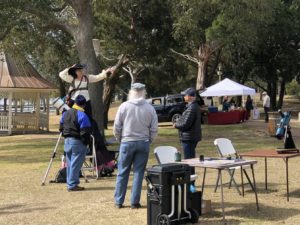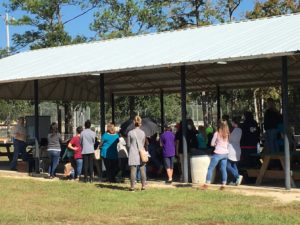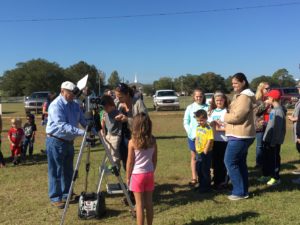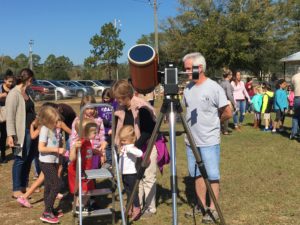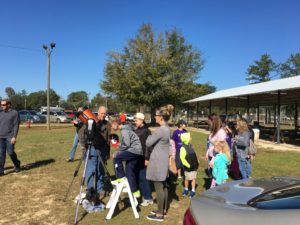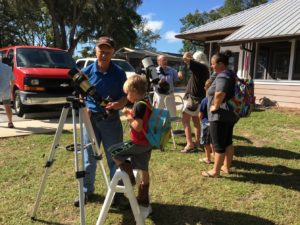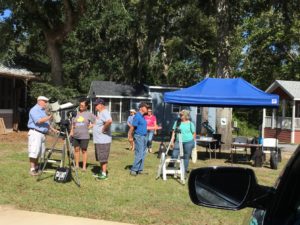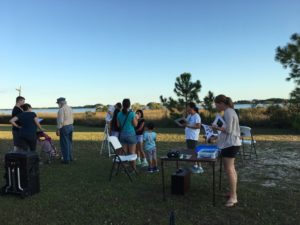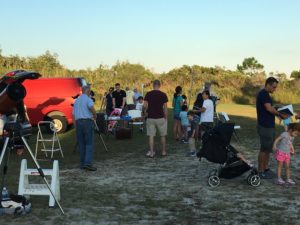Our last public star gaze for 2017 went on without a hitch. As usual for Topsail Hill, we had a few park attendees, who were there for other attractions, stop by and view the Sun through our white light and hydrogen-alpha filtered telescopes. We also had several campers stop by and promise to come back after dark.
NWFAA members who supported the Topsail Hill event were:
- Frank Atchison
- Tom Haugh
- Dennis & Marietta Hausch
- Robert Sutphen
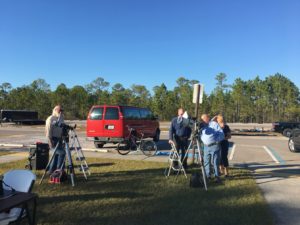 Guests observe the Sun with Dennis’ and Tom’s solar telescopes |
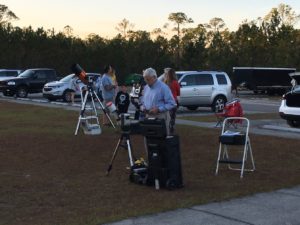 Frank sets up his equipment just as the Sun sets. |
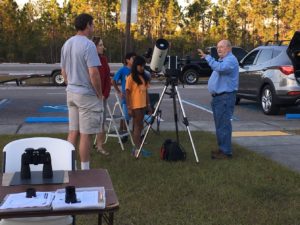 Dennis discusses his telescope with guest observers. |
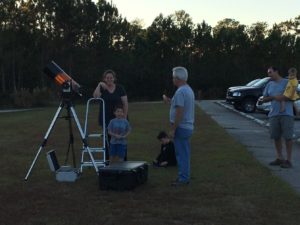 Robert and guests wait for the sky to fully darken. |
As the sky started to darken the crowd of guest observers slowly grew. We transitioned to nighttime telescopes and since Saturn was just visible through the trees to the southwest, that is where we started. However, it was not long before the planet was no longer visible through the trees.
By the time it was fully dark the Milky Way was just visible. It was not obvious; you had to look for it, but it was there. There was some high thin haze that hid dim objects from view so we had to stick to the brighter deep sky objects.
Some of the brighter objects we were able to view were:
- M 31 (Andromeda galaxy)
- M 45 (Pleiades)
- Double Cluster (NGC 869 & NGC 884)
- M 42 (Orion nebula)
Some of the guests were able to check off the “I observed Uranus” box. Neptune was too low in the low altitude muck to see. Eventually, all the guests headed back to the campground or left the park so we wrapped up just shy of 10:00 PM.
Thanks once again go to Marietta Hausch for the event photography.
Update:
This was Robert’s last star gaze wtih the NWFAA. Robert passed away on the 10th of May 2018. Robert was one of our go-to guys for supporting our educational outreach programs. He had recently updated his mount and was just getting a handle on the new technology. He will be missed.

Robert supporting our 13 Nov. home schooling event.
